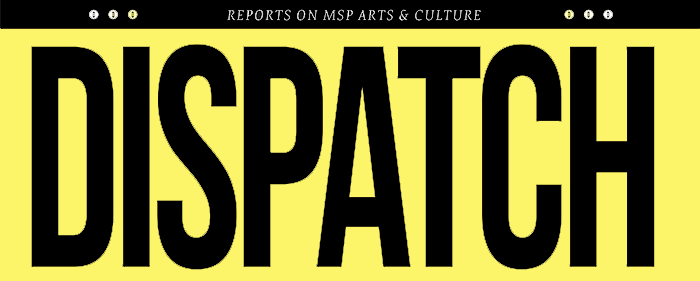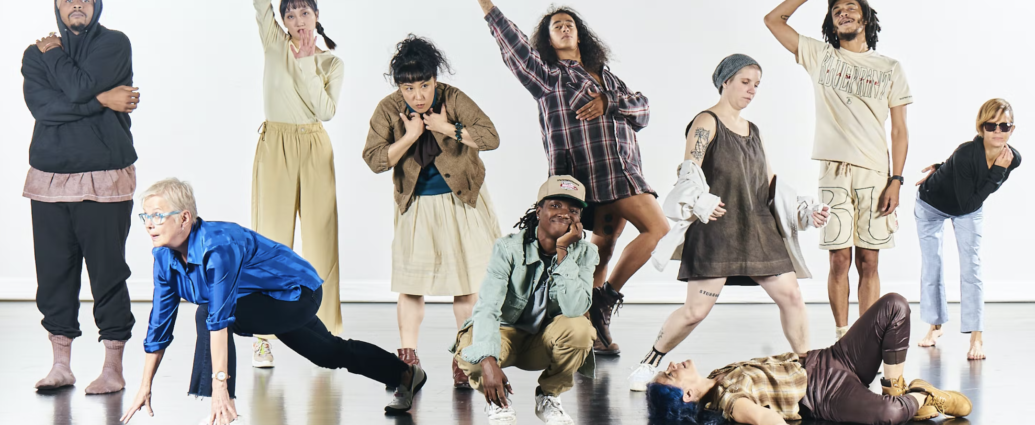WORDS BY Isabelle Wattenberg
This year marks the 50th anniversary of the Walker Art Center’s Choreographers’ Evening–a night of performance that brings together independent, local choreographers to recognize their creativity and curiosity.
A hallmark of the evening is the focus on choreographers, highlighting the sheer expanse of dance as an art form, with works that span across generations, body types, levels of experience, and backgrounds—and intersect with multiple forms of media, from film to installation, photography, and even nature.
“[Dance is] such a vehicle–in these times in particular–to show off a range of what performance can be,” says Philip Bither, the Walker’s senior curator of performing arts. “I think that over the decades the event has only become that much more interesting and diverse in all its means, and reflective of a kind of expansive creativity that encompasses dance today.”
Each year, the Walker invites one or two dancers to curate the show, and this year’s co-curators are Choreographer and Professor of Dance Judith Howard, and Dancer-Choreographer, Educator, and Artist Organizer Alanna Morris—who are both Choreographers’ Evening alums. Together, they developed a framework for reviewing auditions, searching for pieces that ask questions and communicate a sense of aliveness.
“It feels like such an honor to be able to step into the world of an artist, and be able to visit that world and how that process is working, and I think that’s an emphasis that Alanna and I talked about in the beginning,” Howard says. “We really relish the idea of being in the room during that.”
Morris stressed that while the framework guided their selection process, it was important to the curators to avoid falling into a theme that would too easily categorize or not include any type of artist.
“We wanted to be clear that if you’ve seen Choreographers’ Evening, you’ve attended or you’ve heard of it…we want you to look fresh at this, at what we’re doing,” Morris says. “You can be anything.”
Howard explained that the evening will acknowledge the event’s longevity, but won’t linger in the past. It won’t be a retrospect or reprise, but instead performances that harness and deepen the community fostered by the event and introduce something that feels both new and now.
“We kept the idea of legacy on our radar, rather than history and who has the history,” Howard says. “Not legacy because the work is in the past, but again because the lineage is in the body and the present.”
The co-curators emphasized the impact of bringing live performance and audience together–especially after so many months with limited opportunity to do so.
“It doesn’t live without the witness, this form,” Morris says. “There’s an element to it where you need a witness, you need an exchange.”
“It is body to body and it disappears as soon as it happens,” Howard says. “The audience completes the work.”
Meet some of the performers who will share their works at the Choreographers’ Evening:
This year marks Kayla Schiltgen’s third Choreographers’ Evening performance, but she first discovered the program as an audience member. That evening revealed to her the possibilities that dance offered.
“I remember sitting in the audience and watching each artist have such a unique voice and perspective and different aesthetic to what I’d seen as a kid,” she says. “That’s what I crave as an artist . . . it opened up my eyes to what my own voice could become.”
Schiltgen lives and creates in Two Harbors, Minn., a rural landscape where she interacts daily with nature and wilderness. This fuels, and infuses with, her art.
“My biggest collaborator is the natural environment and the landscape I’m working in,” she says. “Like any collaborator, we’re in communication over a period of time, and I’m learning about them. I try to approach the spaces I’m dancing in in the same way.”
Schiltgen’s piece for the Choreographers’ Evening uses the hybrid art form of dance and film called screendancing, where videotaped choreorgraphy is edited to create something entirely new. Living in frequent isolation with no easy access to rehearsal space and production support demanded she find new ways to create.
“It was both a moment of curiosity and also necessity that led me to work in this medium,” she says.
At the same time, Schiltgen’s work aims to listen to and tell nature’s truth–not filter or mold it to her needs. Bringing the sounds and scenes of the North Shore to the audience is as valuable as sharing her movement—and they’re inevitably intertwined.
“It’s really about asking, ‘What do you want me to show you?’” she says, “Rather than… ‘How do I get the beautiful thing I want?’”
Averie Mitchell-Brown, a freelance dancer, choreographer, and educator, grew up dancing at her godparents’ ballroom studio and performing in school musicals, which drew her in with their marriage of plot and performance.
“I really liked the way that storytelling and movement went hand in hand,” Mitchell-Brown says.
Mitchell-Brown’s style focuses on African diasporic movement, which combines ’90s and 2000s hip-hop, Broadway, and modern Afrobeat dancing. She started producing her own works two years ago, gracing stages such as the Cowles Center, and teaches hip-hop at Northeast dance studio HotHouse. While her classes focus on building confidence with the choreography, Mitchell-Brown said she encourages students to add their own moves and emotion to the choreography once they feel comfortable.
“Dancers do way better when they’re invested in it. The story comes across better,” she says.
Mitchell-Brown’s contribution to the Choreographers’ Evening is a hip hop and urban dance ensemble piece that she orchestrated to “take a common idea and make it elaborate.”
This concept—and her overall approach to choreography—she explains is to create conversation among audiences, leaving them with questions and theories to swap and trade about what they just watched.
“I don’t know what the audience will get from this particular piece and that’s exciting,” she says. “No one gets all of the details the first time … I like the type of artwork where you don’t understand it and you feel compelled to talk to the person next to you.”
Mitchell-Brown sees storytelling through choreography as not only a conversation starter for audiences, but within dance and art communities as well.
“What is art without conversation?” she says.
In my conversation with Howard and Morris, one audition they referenced in detail was that of transdisciplinary artist Elizabeth Finsch’s performance, a debut collaboration with musician Jordan Lawrence. The piece employed what Morris calls ‘duration-based work’ where movement occurs over a long period of time.
“I remember Judith and I had this strange phenomenon where even after seeing her work, we were talking slower,” she says. “It really took us into the frame of reference that she was in practice of, in real time before us, so we were one with the work.”
In 2019, Flinch suffered a brain injury from a car accident that forced them to reconfigure their relationship with and understanding of movement and their body in space. What emerged was a practice of dance that focuses on deliberate, fluid movement, enabling Flinsch to embrace and revel in the freedoms that dance offers.
“My daily routine had to simplify dramatically and my world felt small,” Flinsch says. “Movement practice became more important than ever.”
Flinsch said art and art-making has always felt sacred, and they both appreciate their ability to participate and also recognize the journey it sends them on.
“Working within my limitations, I see memory loss and visual dysfunction as an asset to my embodied movement,” they say. “My work is always in metamorphosis; a state of continuous becoming.”


Comments are closed, but trackbacks and pingbacks are open.